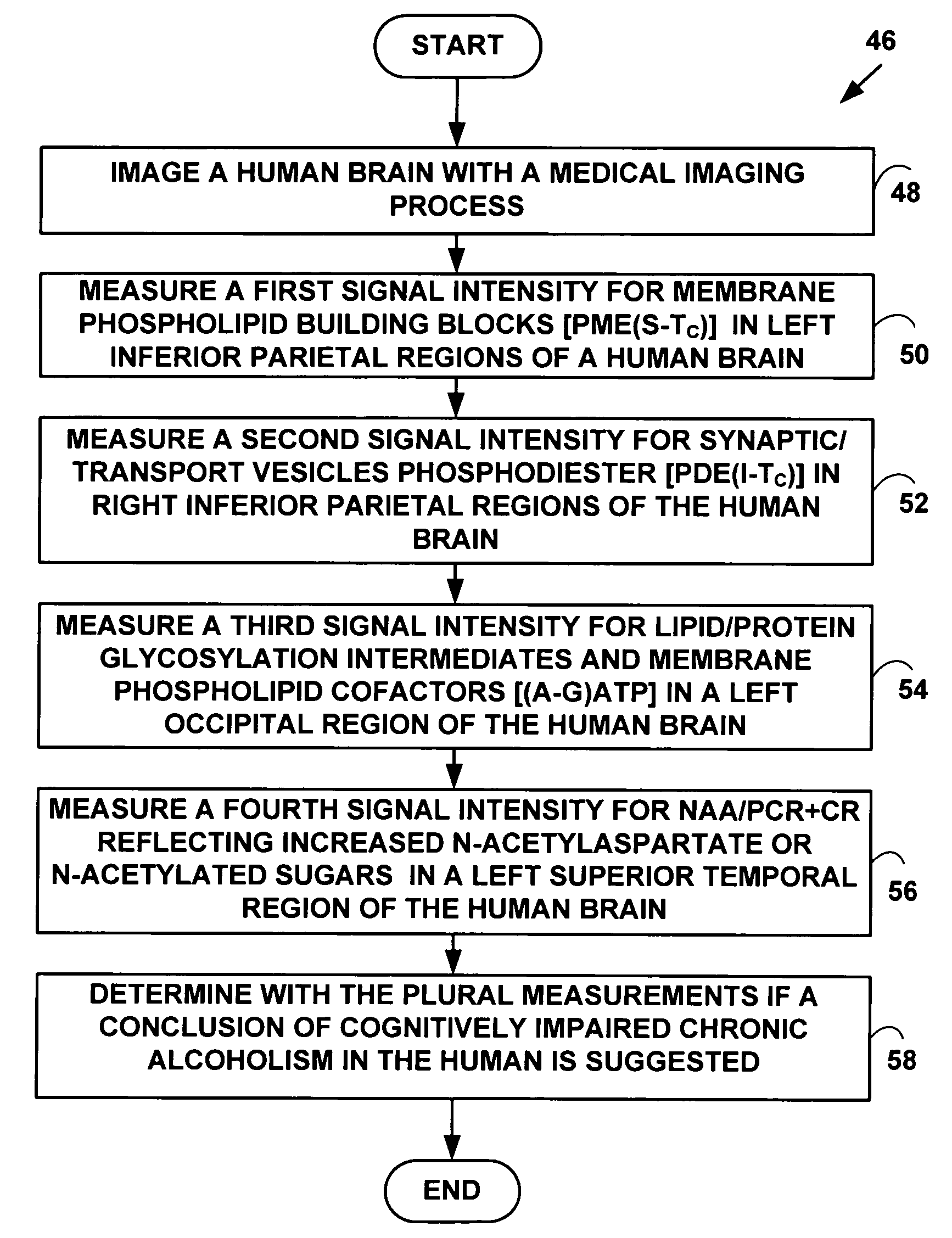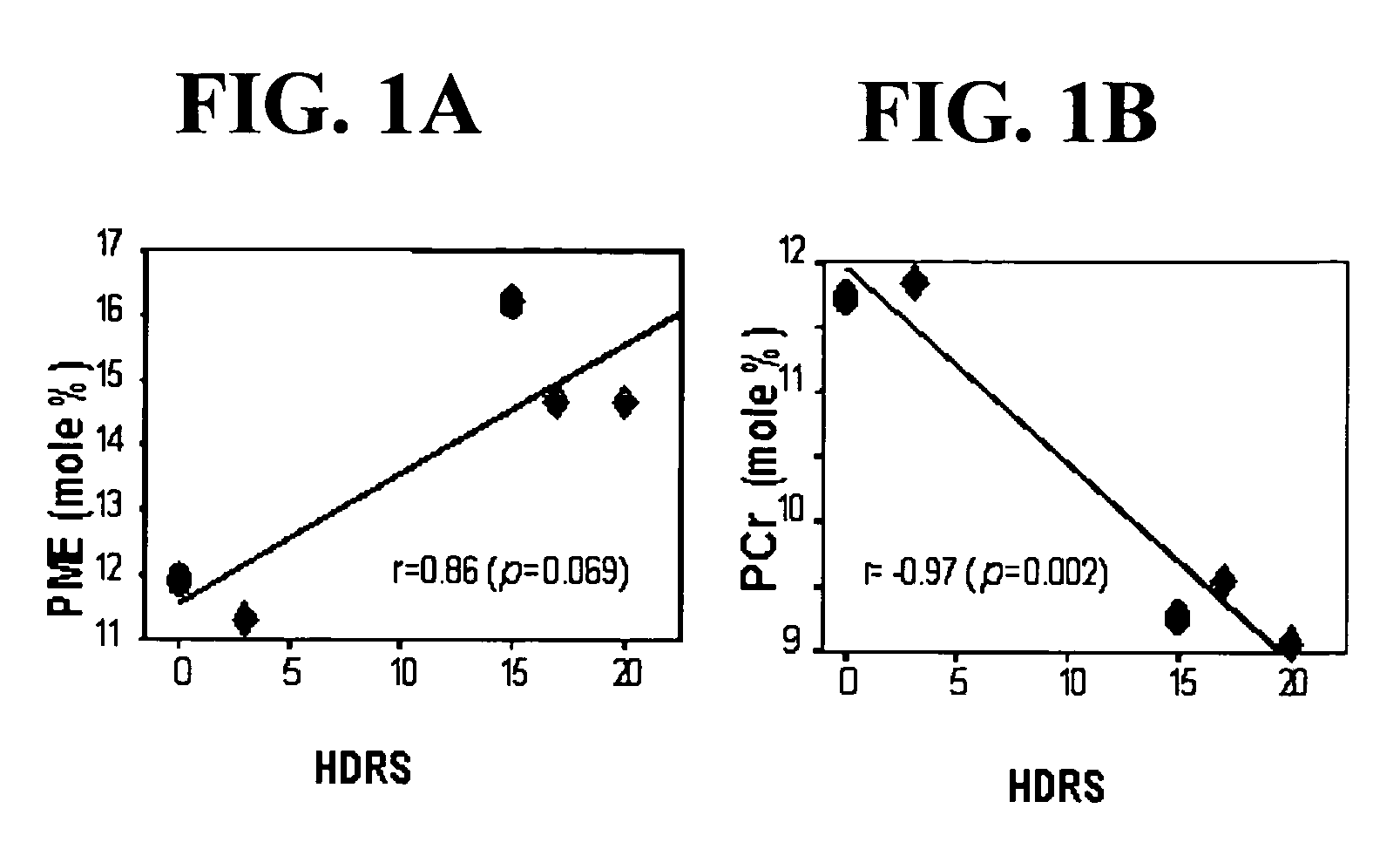[0031] ALCAR has been shown to exert a beneficial effect on brain metabolism after energetic stresses. In a canine model of complete, global cerebral ischemia and reperfusion, ALCAR treated animals exhibited significantly lower neurological deficit scores (p=0.0037) and more normal cerebral cortex lactate/pyruvate ratios than did vehicle-treated control animals (Rosenthal et al., 1992). In a rat cyanide model of acute hypoxia, increased rate of phosphatidic acid formation, possibly reflecting increased phospholipase C activity was observed and spatial navigation performance in a Morris task was impaired. Chronic treatment with ALCAR attenuated the cyanide-induced behavioral deficit but had no effect on energy-dependent phosphoinositide metabolism suggesting ALCAR affected free fatty acid metabolism by increasing the reservoir of activated acyl groups involved in the reacylation of membrane phospholipids (Blokland et al., 1993). In a canine model employing 10 minutes of cardiac arrest followed by restoration of spontaneous circulation for up to 24 hours, ALCAR eliminated the reperfusion elevation of brain protein carbonyl groups which reflect free radical-induced protein oxidation (Liu et al., 1993). In a rat streptozotocin-induced model of brain hypoglycemia, ALCAR attenuated both the streptozotocin-induced impairment in spatial discrimination learning and decrease in hippocampal choline acetyltransferase activity (Prickaerts et al., 1995). A deficiency in ALCAR has been shown to be a cause for altered nerve myo-inositol content, Na+-K+-ATPase activity, and motor conduction velocity in the streptozotocin-diabetic rat (Stevens et al., 1996). Finally, sparse-fur mice have a deficiency of hepatic ornithine transcarbamylase resulting in congenital hyperammonemic with elevated cerebral ammonia and glutamine and reduced cerebral cytochrome oxidase activity and a reduction in cerebral high-energy phosphate levels. ALCAR treatment increased cytochrome oxidase subunit I MRNA, and restored both cytochrome oxidase activity and the levels of high-energy phosphates (Rao et al., 1997). Our studies of hypoxia in Fischer 344 rats demonstrate ALCAR's beneficial effect on brain membrane phospholipid and high-energy phosphate metabolism (Pettegrew et al., unpublished results.
[0032] ALCAR has been shown to effect membrane structure and function in a number of different systems. ALCAR administration affects the inner mitochondrial membrane protein composition in rat cerebellum (Villa et al., 1988), increases human erythrocyte membrane stability possibly by interacting with cytoskeletal proteins (Arduini et al., 1990), increases human erythrocyte cytoskeletal protein-protein interactions (Butterfield & Rangachari, 1993), and alters the membrane dynamics of human erythrocytes in the region of the glycerol backbone of membrane phospholipid bilayers (Arduini et al., 1993).
[0033] A number of studies have demonstrated that ALCAR enhances the neurotrophic activity of nerve growth factor (NGF). ALCAR increases NGF binding in aged rat hippocampus and basal forebrain (Angelucci et al., 1988), increases NGF receptor expression in rat striatum, and increases choline acetyltranferase activity in the same area (De Simone R. et al., 1991), enhances PC12 cells response to NGF (Taglialatela et al., 1991), increases the level of NGF receptor (P75NGFR) mRNA (Taglialatela et al., 1992), increases choline acetyltransferase activity and NGF levels in adult rats following total fimbria-fornix transection (Piovesan et al., 1994; 1995), and enhances motomeuron survival in rat facial nucleus after facial nerve transection (Piovesan et al., 1995).
[0034] ALCAR has some cholinergic activity (Fritz, 1963; Tempesta et al., 1985), possibly because it shares conformational properties with acetylcholine (Sass & Werness, 1973). This is interesting as acetylcholine may play an important role in the chronobiological organization of the human body (Morley & Murrin, 1989; Wee & Turek, 1989), mediating also some effects of light on the circadian clock (Wee & Turek, 1989). Acetylcholine is implicated in the regulation of the hypothalamic-pituitary-adrenal (HPA) axis (Mueller et al., 1977; Risch et al., 1981) and cholinomimetics are effective on the HPA axis (Janowsky et al., 1981; Risch et al., 1981). ALCAR also seems to interfere with the serotonergic system (Tempesta et al., 1982; 1985). There is ample evidence supporting a reduction in serotonergic activity in depression (Ashcroft et al., 1966; Asberg et al., 1976; Cochr
 Login to View More
Login to View More 


